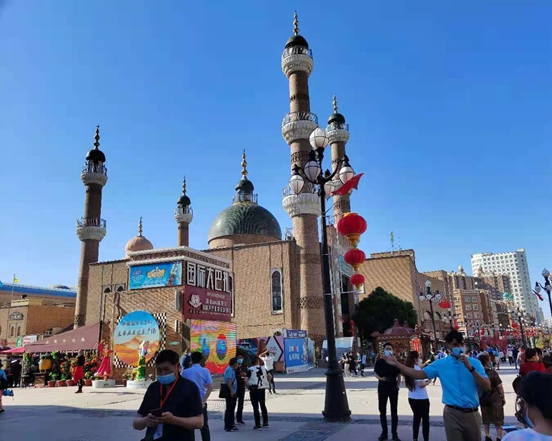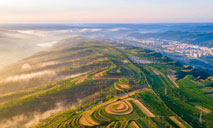Technology and tradition: How Xinjiang reconciles both
After a few very dry and hot days, I learned to cherish the rain clouds hanging over the city I was heading to: Urumqi, the capital of Xinjiang Uygur Autonomous Region in northwest China.

The International Grand Bazaar in Urumqi, capital of the Xinjiang Uygur Autonomous Region. (People’s Daily Online/Annemarie Li)
Although it just felt like a stone’s throw away from Turpan, the setting of the city was completely different. This was not only due to the temperature drop of around 20 degrees Celsius, but also the elevated roads winding around modern and tall buildings, the commercial banners attached to it and finally the green and flourishing ambience in general, which according to locals is actually implied in the city’s name.
Nevertheless, Urumqi still felt very much like a work in progress, with lots of yellow cranes and excavators adorning the landscape. Being curious about the businesses hidden within the architectural masterpieces, I decided to visit the Urumqi Economic and Technological Development Zone.
There, I learned that the region’s high-tech industry amazingly complemented its prevailing agriculture industry by specifically developing high edge farming equipment like Beidou navigation satellites system controlled drones and other driverless farm vehicles that have made a big contribution to the industry’s automation.
What I found astonishing was that even something as traditional as stockbreeding had benefited from automation, or rather digitalization. For example, herd animals can now be equipped with transmitters that report their location as well as physical condition to an application that is controlled by the livestock owner. This kind of technology does not even need a lot of investment, as it is usually enough to place a sender in the ear of the alpha animal. Letting the herd move about on its designated land gives new opportunities to livestock owners, who can now use this time for other business.
Talking about the locals in Xinjiang and especially in Urumqi, what I experienced is that although they have started using high-tech devices, their lifestyle can generally be described as very genuine and traditional. The rich culture of all predominant different ethnic groups was evident to me during every step I took in Xinjiang, and the diversity of this special place fascinated me. Traditional practices like handmade paper, hand spun silk or handcrafted musical instruments seem to present a major contrast to the just mentioned automation, but nevertheless, these and other beautiful customs luckily are still prevalent today.

View of the Heavenly Lake of Tianchi scenic area located near Urumqi. (People’s Daily Online/Annemarie Li)
Travelling through Xinjiang was a great adventure, and one that closed on a high when I reached my last stop: the tourist site called the Tianchi lake, or Heavenly Lake of Tianchi scenic area. Watching the incredibly beautiful snow mountains while boating on the waters, I recalled the last two weeks that I have spent in Xinjiang. I stood there for a long time and knew it would take me a few more weeks to comprehend what I had experienced. So far, I can definitely tell you that Xinjiang is an extraordinary part of China and absolutely worth a journey. And I know that I am speaking for the majority of the people here, when I say: 新疆欢迎你!(Welcome to Xinjiang)
Photos
Related Stories
- China holds national meeting on pairing-assistance to Xinjiang
- Story of a Uygur tour guide in the ancient city of Kashgar
- Xinjiang’s new frontier: Rural e-commerce shining bright in China's sunny northwest
- Xinjiang, My home: Ethnic Kazakh father records happy life through paintings
- Soldiers engage mock targets in ghillie suits
Copyright © 2021 People's Daily Online. All Rights Reserved.










